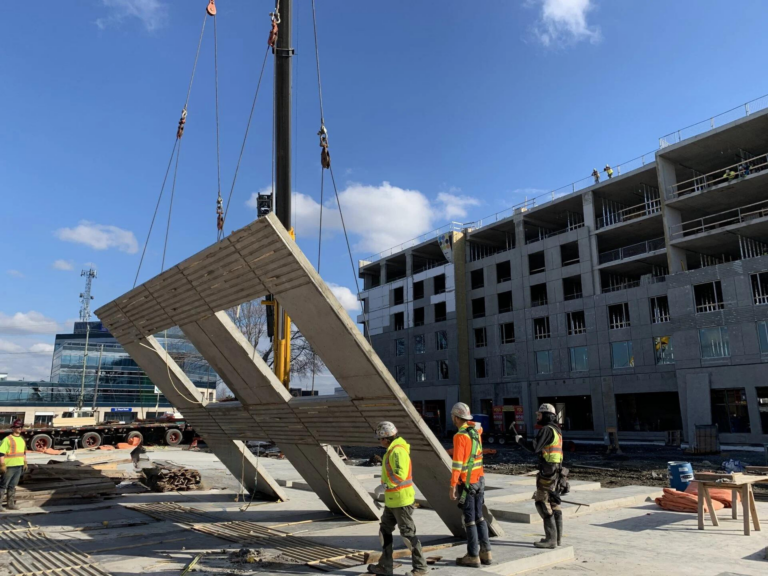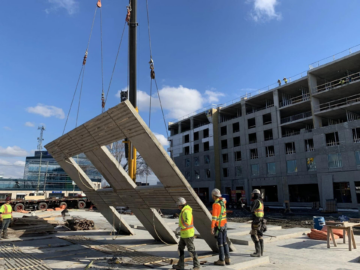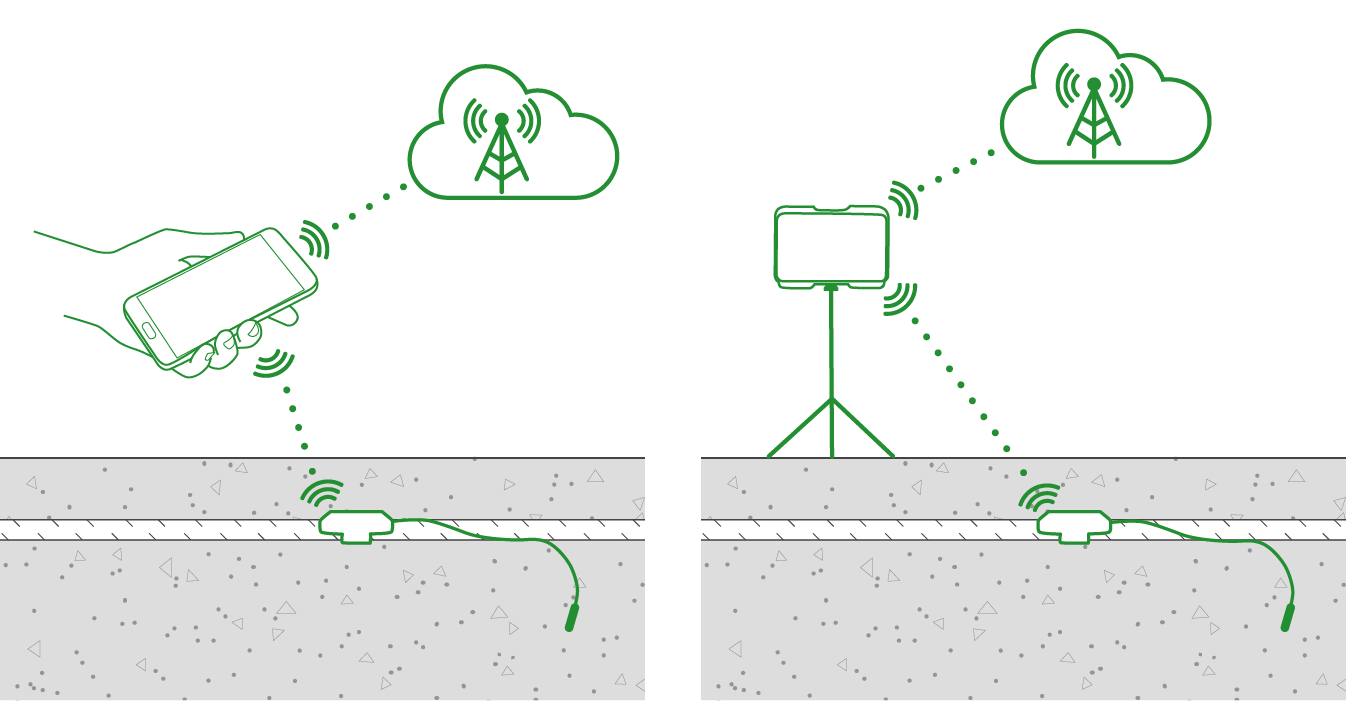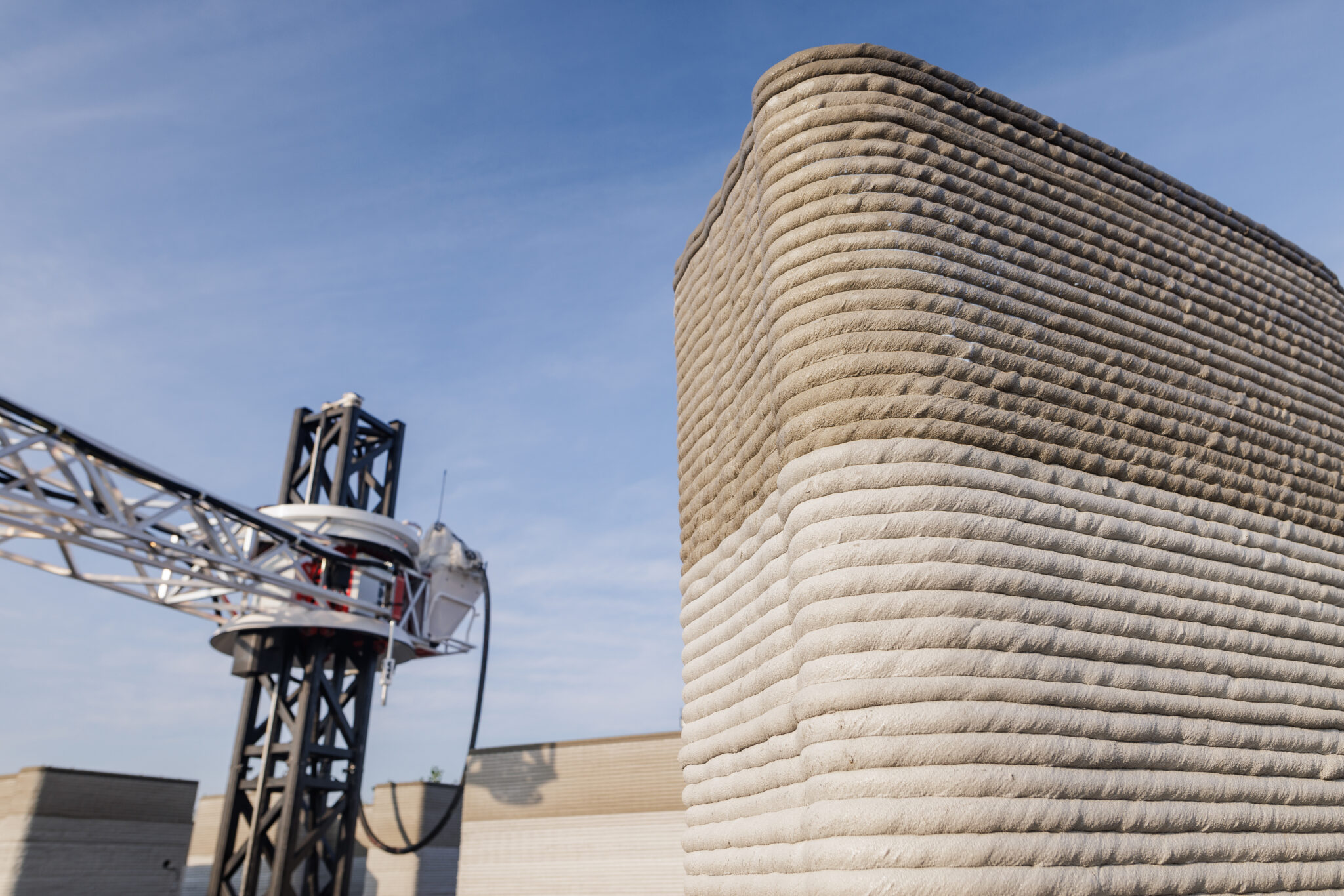In the construction industry, innovations that reduce costs and speed up project completion are highly sought after—so it’s no wonder that we’re seeing a resurgence in the popularity of tilt-up construction. According to Tilt Wall Ontario Inc, over 10,000 buildings are constructed using the tilt-up method each year.
Explore 12 Futuristic Technology Trends Solving Concrete's Biggest Challenges.
Invented in the early 1900s, tilt-up is a construction method in which large concrete elements are cast onsite and lifted into place by high-capacity mobile cranes. It has long been considered a viable approach for all kinds of everyday buildings and has recently gained a foothold within the architectural community as an innovative method to create interesting aesthetic form.
Why Choose Tilt-Up?
From design to well-beyond completion, the whole tilt-up process optimizes efficiency and offers many advantages. Apart from its architectural versatility and the known benefits of concrete such as its fire-resistance, durability, and the lower operating costs of concrete buildings—tilt-up construction is faster, safer, and more cost-effective than other techniques.
Workers complete most—if not all—of their work on the ground, without scaffolding. This means that the chance of crew injuries from falls is greatly reduced. Also, once the exterior panels are lifted into place, the enclosed structure allows multiple trades to get to work simultaneously enabling speedier completion.
How Does Tilt-Up Construction Work?
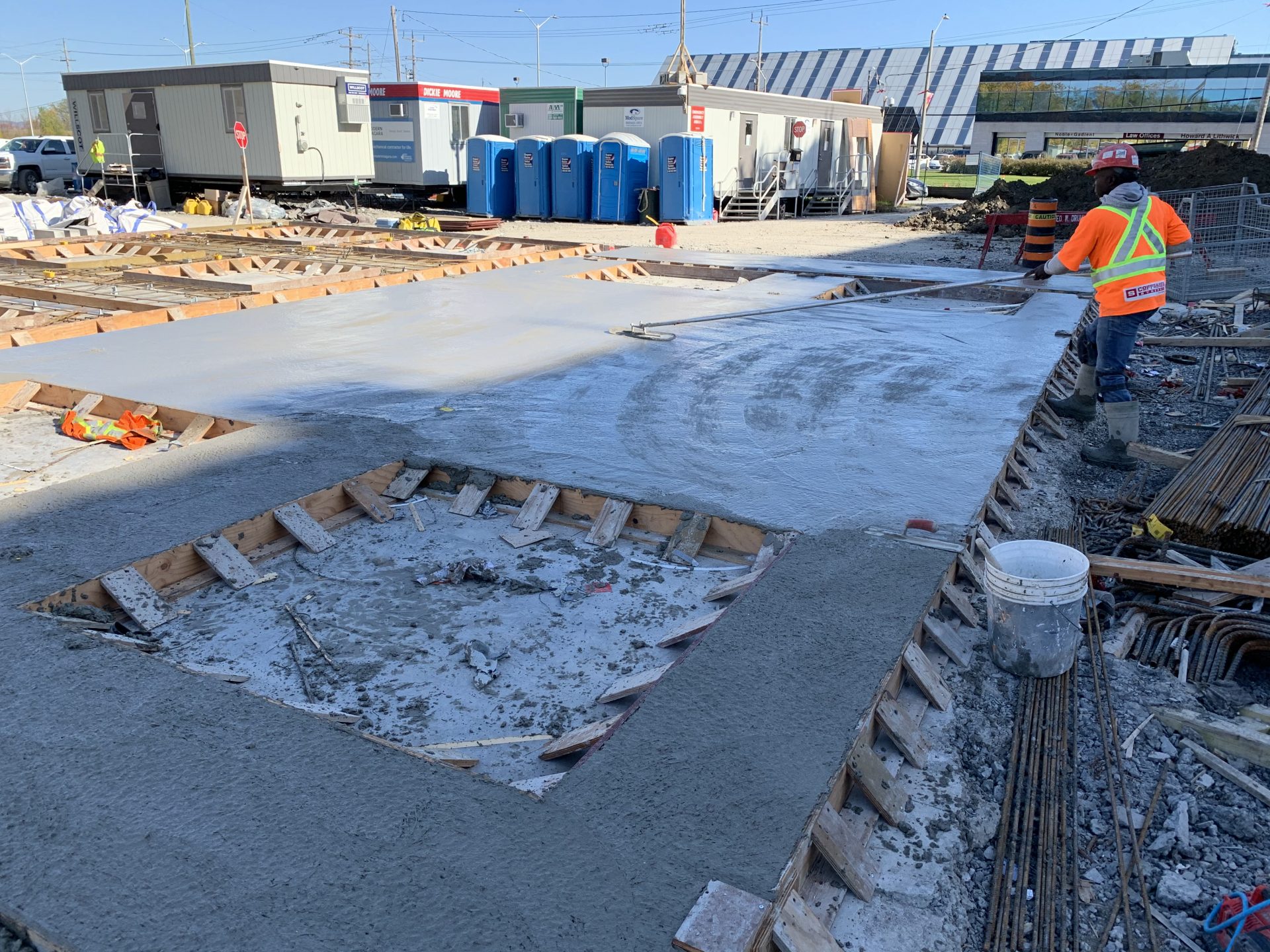
Before construction even begins, the jobsite and sequencing of events are planned with great attention to detail. This ensures a few things:
- crews are kept safe and work can be completed efficiently and on-schedule;
- adequate space for panels to be prepared, cast, and lifted; and,
- the crane(s) will be able to move around the jobsite in a logical sequence without obstruction.
All of this planning at the outset of tilt-up construction projects saves time and money in the long-run.
Once the site has been prepared, workers start by building the casting surface for the job—which is often repurposed as the floor of the building itself. It’s important that the casting surface is flat because it will serve as the basis for all the other concrete elements that are cast on top of it.
Tilt-up panels are then laid out with wood formwork on the casting surface according to the building plans. Most of the time, panels will be cast with the exterior face of the building facing down, so any structural embeds or form-liners for exterior finishes are installed first.
After this, steel reinforcement formwork is installed in the panels. Additional structural embeds are secured to the formwork, as well as inserts to allow the crane(s) to lift the panels into position once the concrete is poured and cured.
Before you can tilt up your panels, the concrete has to be tested for both compressive and flexural strength.
Delays on Tilt-Up Construction Projects
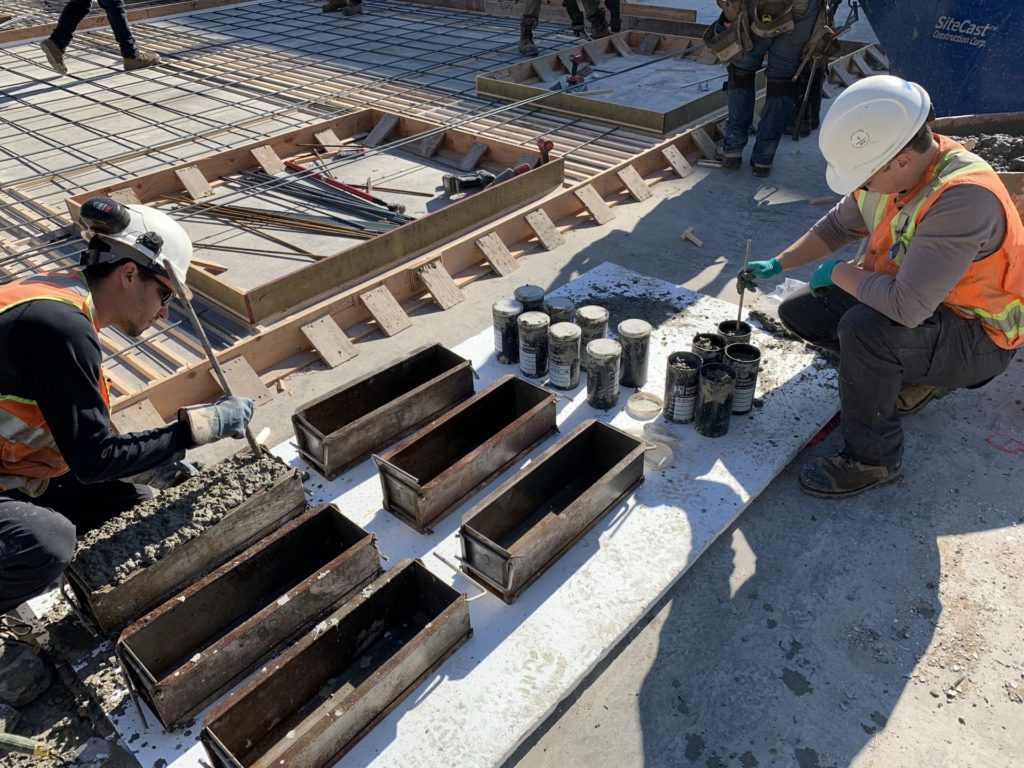
At this point—in spite of all their efficiencies and pre-planned process-order—even tilt-up construction sites can experience delays because of concrete testing with third-party labs.
With tilt-up, in addition to compressive strength, you must test the concrete’s tensile or flexural strength (ASTM C496) so that you can tilt up your panels without the slab cracking in the middle while being lifted.
Traditionally, when pouring concrete for the panels begins, separate concrete cylinders and beams have to be poured and cured onsite, and then shipped to a third-party lab for strength testing. From waiting for samples to get to the lab to weather variations affecting the curing time of your slab and delays in getting test results back—third-party concrete testing is a cumbersome step that can add unpredictable variables to your job.
On larger tilt-up projects where you’ve rented sophisticated equipment to get the job done, every day you’re waiting for test results is a day you’re paying for unused resources. Ultimately, these delays push back your completion date and increase the cost of your project.
Every contractor or project manager strives to bring predictability to their jobs—it’s why methods like tilt-up are becoming more and more popular. But—no matter how robust your plan—if you’re beholden to outside consultants for parts of a project, timelines can end up out of your control.
Using Concrete Maturity Monitoring Curing to Eliminate Delays on Tilt-Up Operations
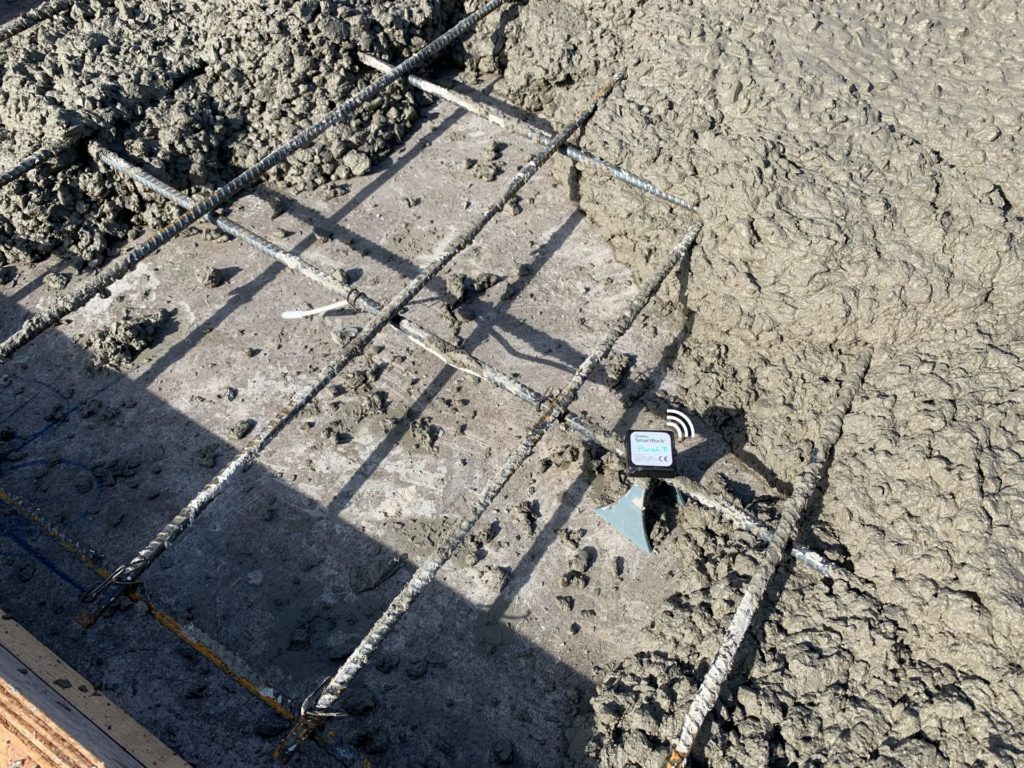
Concrete curing sensors, like SmartRock®, can monitor the temperature of your tilt-up panels over time to determine the strength of your concrete in real-time with a method called concrete maturity.
Learn More About Maturity-Based Concrete Monitoring with SmartRock!
ASTM C1074, the standard practice for maturity, defines the method as “a technique for estimating concrete strength that is based on the assumption that samples of a given concrete mixture attain equal strengths if they attain equal values of the maturity index.”
A maturity calibration must be established to monitor both compressive and flexural strength properties of a pour. All you have to do is perform two different calibrations with your sensors—one using cylinders for compressive strength, and another with beams for flexural strength. In other words, by testing the temperature and maturity of these samples and using these metrics as a template—you eliminate the need for testing additional beams and cylinders.
Once this calibration is done and inputted into the SmartRock® mobile app, and the sensors are installed in the formwork of your tilt-up panels, you won’t need to send anymore samples to a lab for testing in-situ concrete temperature and strength. Instead, this data is available to your team and updated in real-time directly on your mobile device from the moment you start pouring.
Both the flexural and compressive strength values of your tilt-up panels can easily be obtained in the SmartRock App at any time. If you want to see the flexural strength of your in-situ concrete, select the calibration that was completed using the beams. Or, if you want to view your concrete’s compressive strength, select the calibration you set up using cylinders. Then, just select a sensor to view its data. You can easily switch between these strength values, it only takes a minute to view all of this data in one place.
What’s more—if you also install SmartHub™, you’ll be able to collect data from all the concrete maturity sensors on your site and access it remotely, at anytime, from anywhere. This will allow you to even further optimize your tilt-up construction schedule and reduce costs and delays. Whether you’re at home after a long day of work, or on another jobsite—you’ll be notified the minute your tilt-up panels are ready to be lifted.
Optimize Your Tilt-Up Schedule with Concrete Maturity Monitoring
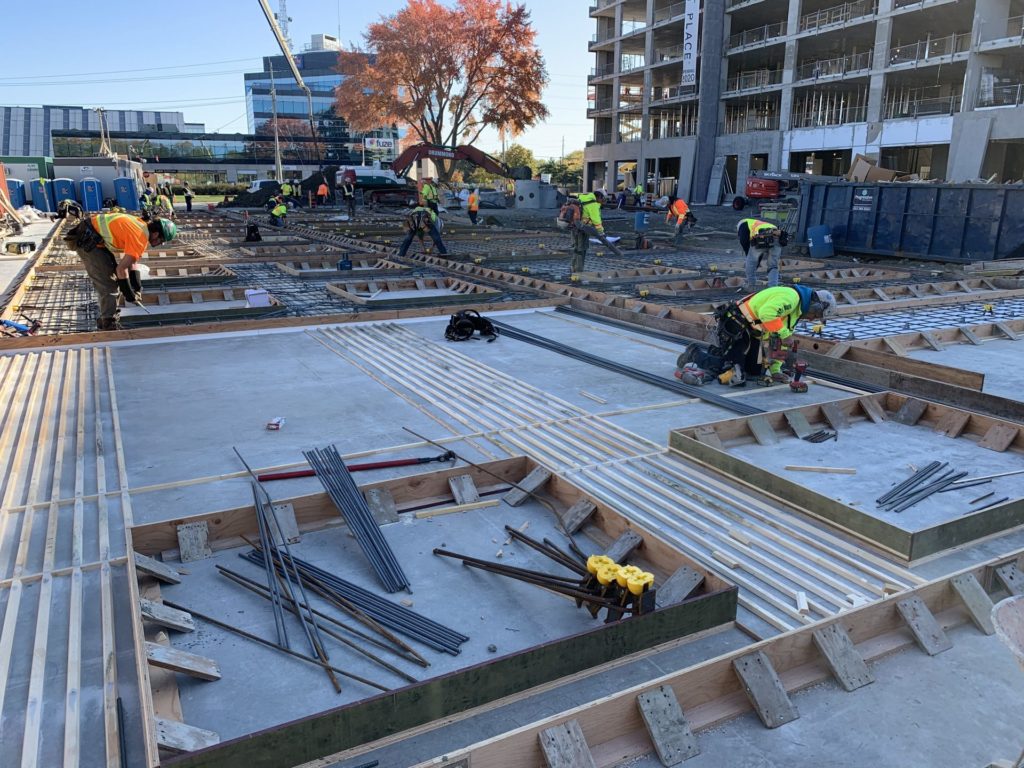
Tilt-up is a truly innovative building method that requires a fine-tuned logistical approach—and we’ve only scratched the surface on its potential to increase efficiency! When you’ve worked hard on a meticulous plan to ensure your tilt-up construction project goes smoothly, the last thing you want are delays you can’t control.
SmartRock and SmartHub concrete maturity monitoring won’t just help speed up your tilt-up projects—they’ll help you go full-tilt on finding even more innovative solutions to optimize your construction schedules across all your jobs!
Source:
Tilt Wall Ontario Inc

